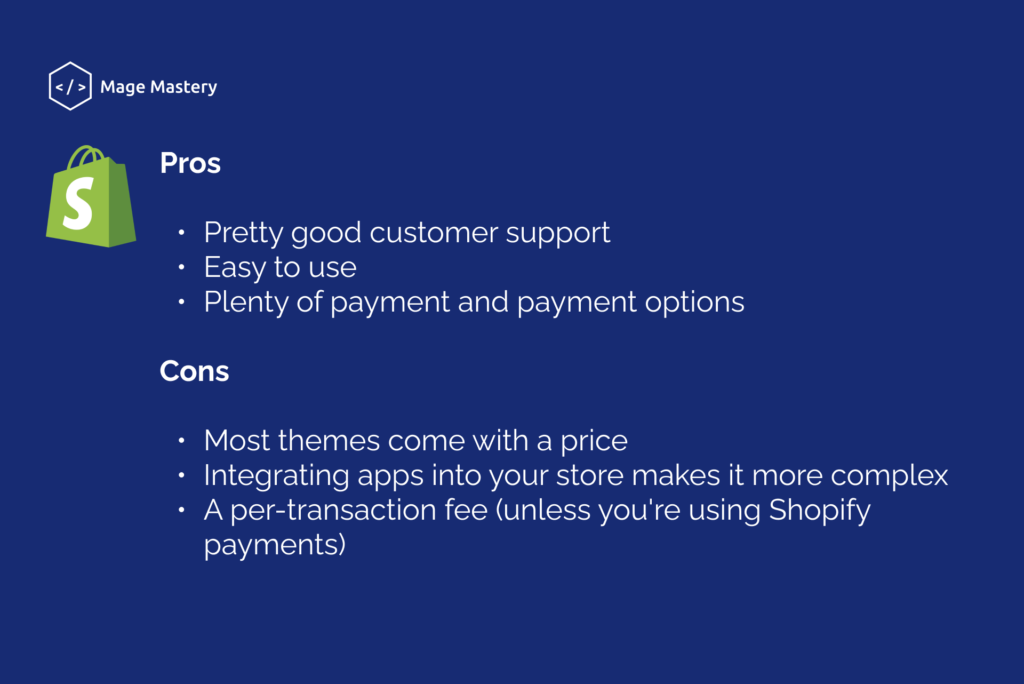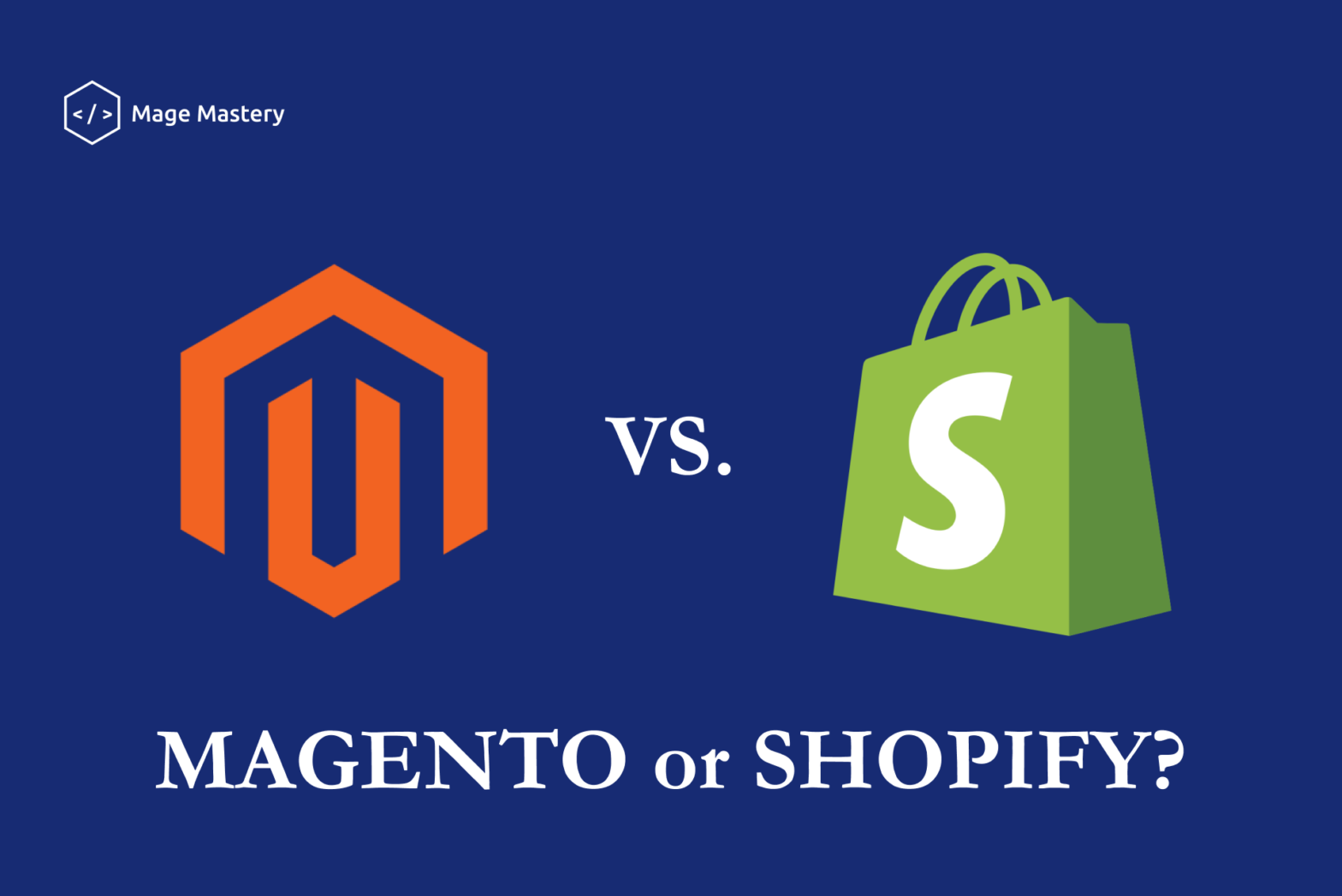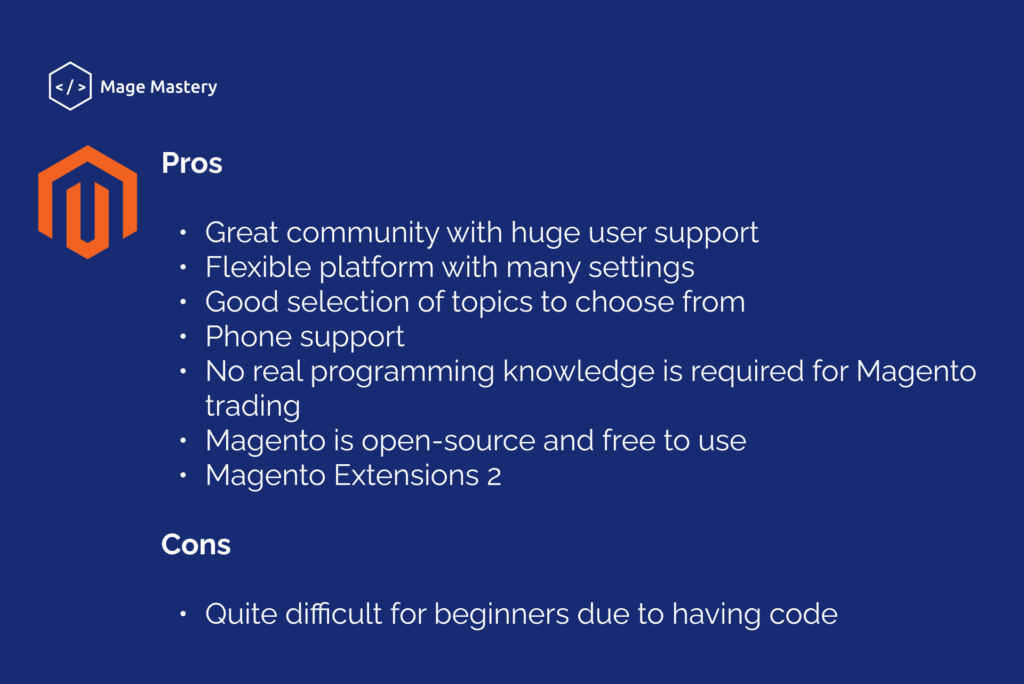Choosing a platform for an online store matters a lot since this choice directly affects your online store. Some of the most popular platforms are Magento and Shopify. Which one to choose?
Let’s take a look at this question today.
Magento is a powerful platform, but you’ll find that it needs code knowledge in JavaScript, PHP, CSS, and HTML. It’s more suitable for businesses with their in-house or outsourcing development teams.
Shopify is an easy solution for building online stores. There you pay a monthly fee.
Let’s analyze the main advantages and disadvantages of these platforms.
Magento
The main thing that scares users in Magento is the presence of code. But there are also significant benefits. About them below.
Shopify
Shopify is easy to use and a quick way to create an online store for small businesses.

We see that Magento is more suitable for bigger stores that want to have bigger results. But Shopify is an attractive platform that doesn’t need coding.
Let’s compare the functionality of the platforms.
Shopify and Magento offer core store functionality that is powerful enough to be used and maintained on an ongoing basis. You will find that core features such as shopping carts, checkout modules, collections, and product pages are included in both versions. The main difference is that Magento has many more intermediate and advanced features built into the system. With Shopify, you often have to get an app for advanced functionality.
Inventory Management
All Magento plans allow an unlimited number of products in your store. Shopify also allows you to create and sell an unlimited number of products. You can easily create products and collections on both platforms.
Shipping cost calculation
Both platforms provide flexible and powerful options for calculating shipping costs, which is one of the most basic and important aspects of selling physical goods through an online
store. Magento also integrates with some dropshipping tools (with shipping estimates) and more accurate shipping calculators, which can be helpful if you’re trying to be as accurate as possible for your customers.
Providing coupons and discount codes
Shopify, a bit of an underdog, doesn’t offer this feature on their Lite plan, but it’s available on all other plans. Magento allows you to create and calculate discount codes right from the start.
Themes and templates
Shopify and Magento offer a large collection of themes and templates to make your online store look the way you want. Although the number of free themes provided in Shopify is significantly less than in Magento.
Multilingual capabilities
Shopify doesn’t offer full multilingual capabilities directly. There are third-party/paid apps for Shopify available for creating fully multilingual stores. However, you will most likely have to find an expert Shopify developer to complete the task. Magento has the edge again, with built-in multilingual support.
SEO features
Both platforms offer extensive SEO options to help you drive more organic traffic to your store through search engines while getting the most out of powerful SEO features and benefits.
While both Shopify and Magento are quite powerful eCommerce platforms, Shopify provides ease of use as it is a hosted and fully managed service.
Magento, while free on its own, requires you to purchase a hosting service and complete all software/system setup and installation procedures yourself – something that only a team will be able to do. But this has an advantage: the team that works to ensure the store will be able to quickly respond to errors or make changes quickly and efficiently.
Read more about the benefits of Magento in the article: Why migrate on Magento 2?

